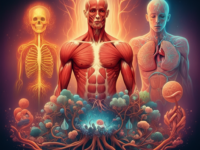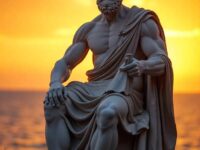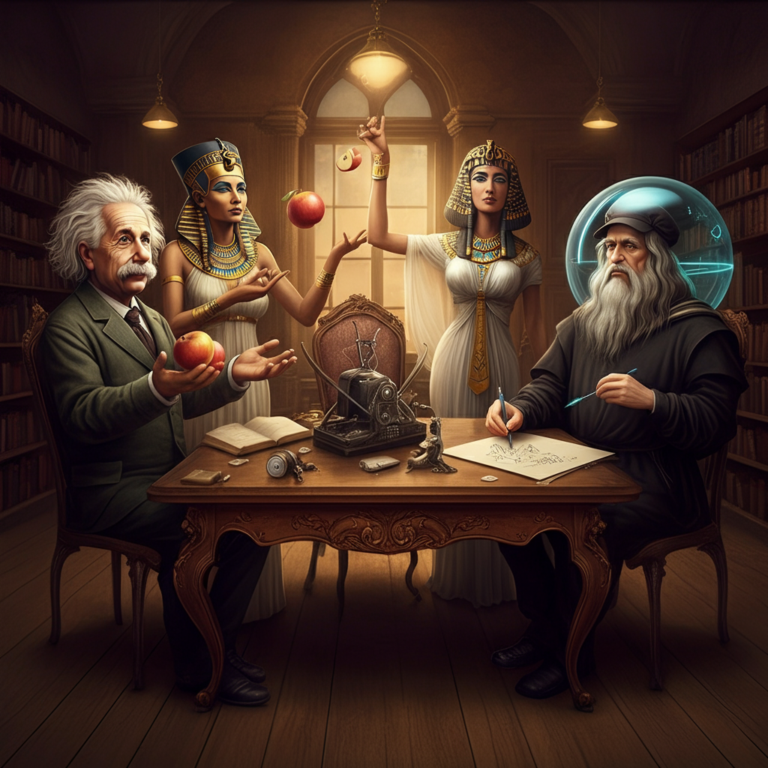History often portrays its key figures through a serious lens—leaders, scientists, writers, and revolutionaries whose deeds changed the world. But beneath these monumental accomplishments lie fascinating quirks and eccentricities that reveal their human side. From odd obsessions to peculiar habits, the following facts provide a refreshing peek into the unusual lives of some of history’s most iconic individuals.
Prepare to see these historical figures in a new light as we uncover seven quirky facts that will surely surprise you.
#1 Leonardo da Vinci Could Write and Draw at the Same Time
Widely celebrated as a polymath and the genius behind masterpieces like the Mona Lisa and The Last Supper, Leonardo da Vinci was also known for an ability that seems almost superhuman. He could write with one hand while drawing with the other—simultaneously! This ambidextrous skill was not just a neat party trick; it allowed him to capture ideas efficiently in his notebooks.
Leonardo often wrote in mirror script (from right to left), which many believe added an element of privacy to his work. However some scholars suggest he wrote this way out of simple practicality since it was easier for a left-handed writer to avoid smudging ink when writing backward. Either way, Leonardo’s brainpower combined with his ambidextrous talent firmly cements his reputation as one of history’s most extraordinary minds.
#2 Napoleon Bonaparte Was Terrified of Cats
Napoleon Bonaparte is remembered as a military mastermind who conquered vast territories and shook the foundations of Europe. But there’s one thing that unnerved this mighty warlord—cats. It’s been said that Napoleon suffered from ailurophobia, an intense fear of felines.
This fear reportedly bordered on irrationality. According to historical accounts, Napoleon was visibly uncomfortable in rooms where cats were present, no matter their size or demeanor. While some might find this hard to believe, it’s a reminder that even leaders who seem invincible can have humbling quirks.
#3 Albert Einstein’s Brain Traveled the World After His Death
Albert Einstein, the father of modern physics and e=mc² fame, had a fascinating post-mortem story. After he died in 1955, his brain didn’t stay with his body. Instead, it was removed during his autopsy by Dr. Thomas Harvey, a pathologist who believed it might hold the secrets of Einstein’s intellectual brilliance.
Dr. Harvey preserved the brain and, over the years, sliced it into sections to study and share with researchers worldwide. While these studies provided some insights into Einstein’s genius—such as a higher-than-average number of glial cells in certain regions—they also sparked ethical debates about consent and privacy. To this day, Einstein’s brain remains an object of both scientific curiosity and philosophical discussion.
#4 Cleopatra Wasn’t Egyptian
Cleopatra VII, often called the last pharaoh of Egypt and famed for her beauty and political savvy, was not Egyptian by origin. Descended from Ptolemy I, a Macedonian Greek general who served under Alexander the Great, Cleopatra hailed from a dynasty that ruled Egypt after Alexander’s conquest.
What truly sets Cleopatra apart, however, is her effort to integrate into Egyptian culture. Unlike many predecessors, she learned the Egyptian language, adopted traditional customs, and presented herself as a reincarnation of the goddess Isis. Her ability to bridge cultures was one of the reasons why she remains a symbol of power and diplomacy centuries later.
#5 Nikola Tesla Slept for Only Two Hours a Day
Nikola Tesla, the visionary inventor behind alternating current (AC) and countless revolutionary technologies adhered to an unusual sleep schedule. He operated on a polyphasic sleep cycle, which amounted to only two hours of sleep per day. Tesla believed this allowed him to maximize productivity and devote more time to his groundbreaking research.
Tesla’s insomnia came with peculiar routines. He reportedly walked 8 to 10 miles a day and had an inexplicable fascination with the number three, often washing his hands or completing tasks in sets of three. These quirks, combined with his brilliance, have made Tesla an enigmatic figure in history.
#6 Edgar Allan Poe Predicted a Real-Life Shipwreck
Edgar Allan Poe, the master of gothic literature, had a knack for creating eerie and unforgettable tales. But did you know he seemingly predicted a real-life event decades before it occurred?
In 1838, Poe published The Narrative of Arthur Gordon Pym of Nantucket, a novel in which shipwrecked survivors resort to cannibalism, drawing lots to determine who would be sacrificed. Remarkably, in 1884, a similar event transpired. The ship Mignonette sank, and its stranded crew killed and ate a young cabin boy named Richard Parker—the same name as the sacrificed character in Poe’s novel.
The uncanny parallels sparked speculation, but it’s likely a mere coincidence. Still, it adds an extra layer of intrigue to Poe’s already mysterious aura.
#7 Winston Churchill’s Parrot Knew How to Swear at Nazis
Winston Churchill, Britain’s steadfast prime minister during World War II, took great comfort in his pets, including a blue and gold macaw named Charlie. But this was no ordinary parrot—Charlie was taught to hurl obscenities at the Nazis, reportedly shouting phrases like “F*** Hitler” during conversations.
Some sources claim it was the parrot’s original owner who taught it the expletives, but Churchill found the bird endlessly amusing. Charlie lived long after Churchill’s death, entertaining visitors and cementing her legacy as the sassiest parrot in history.
The Importance of Historical Quirks
Why do these quirky facts matter? For one, they humanize larger-than-life figures, reminding us that even geniuses, leaders, and legends have their oddities. These eccentricities make history not only engaging but relatable, sparking curiosity about the people behind world-changing events.
From Napoleon’s cat phobia to Tesla’s sleepless nights, these anecdotes illustrate the diversity of what it means to be human. They teach us that greatness often walks hand-in-hand with peculiarity.
Discover More Stories That Amaze and Inspire
Historical figures are far more fascinating than the textbook portrayals suggest. Exploring their quirks can shift how we perceive these individuals and perhaps even how we perceive ourselves.
If you’d like to keep uncovering fascinating stories like these or share your favorite historical fact, sign up for our newsletter or leave a comment below. Who knows—you might inspire the next post!





















0 Comments